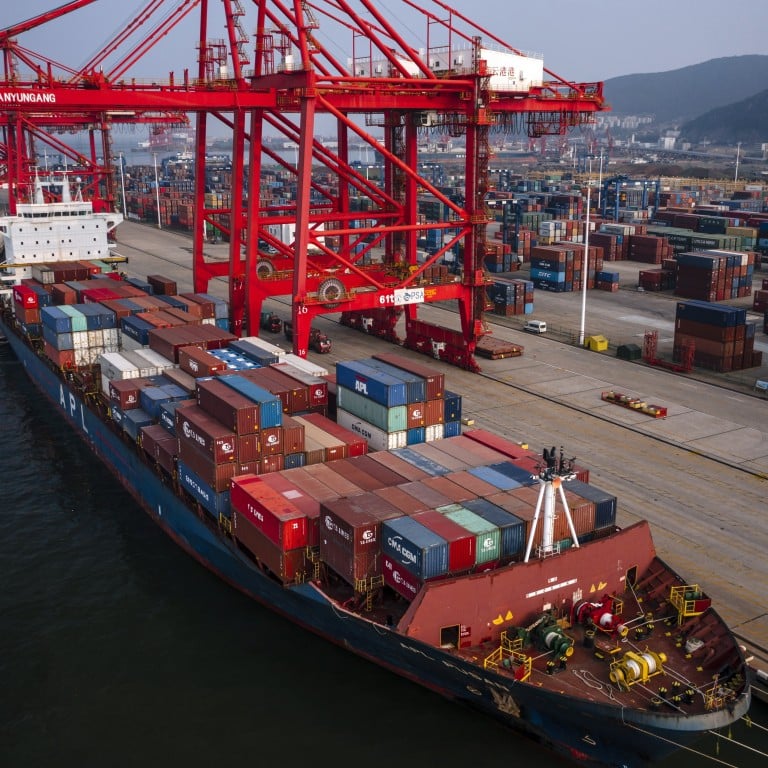
Beijing’s bid to join CPTPP may fail yet also succeed, experts say
- Differences with members of the 11-nation trade pact, notably Australia and Japan, may prevent China winning the backing needed
- CPTPP’s commitments would be difficult for China to meet – but applying may have diplomatic or economic benefits
The pact took shape as the Trans-Pacific Partnership, seen as an effort to counter China before the US’ withdrawal in 2017, after which it was replaced by the CPTPP, without the US.
There has been division in the group – comprising Australia, Brunei, Canada, Chile, Japan, Malaysia, Mexico, New Zealand, Peru, Singapore and Vietnam – over China’s application, which requires unanimous support. Singapore and Malaysia, which have close economic ties with Beijing, have been open to the idea.
In the opposing camp is Australia. Dan Tehan, its trade minister, said his country opposed China joining unless it convinced members it had a “track record of compliance” with international trade agreements, and resumed high-level dialogue with Canberra – suspended over Beijing’s trade restrictions on Australian goods. Japan, too, said it needed to determine whether China was ready to meet the trade pact’s “extremely high standards”.
Bryan Mercurio, an expert in free-trade agreements and trade law at the Chinese University of Hong Kong, said the application was significant in China’s efforts to position itself “as a strategic partner for growth and development, not a bully or threat”. But he said there was not “even a remote chance” that China would change its laws and policies to meet CPTPP standards.
Explained: the CPTPP trade deal
“China will struggle to meet the commitment level necessary for the CPTPP in several areas, most notably subsidies, state-owned enterprises [SOEs], digital trade and possibly investment,” he said.
“There is also a growing belief that China does not fully implement its international commitments. This is not a good reputation to have, because it will mean other parties will be hesitant to provide any space in the negotiations.”
The CPTPP contains more rigorous trade commitments – including on labour, the environment, digital trade and SOEs – than the Regional Comprehensive Economic Partnership (RCEP) signed by China and 14 other Indo-Pacific countries last year.
China’s application follows the newly announced Aukus military alliance between the US, Britain and Australia, although Beijing denied it was linked.

03:29
RCEP: 15 Asia-Pacific countries sign world’s largest free-trade deal
“I suspect Biden was waiting until his second term, but I cannot see how that will now be possible,” he said. “The risk, however, is that the policy will be even more antagonistic towards China.”
A Beijing-based professor, who declined to be named because of the political sensitivity, said it was very unlikely China would agree to CPTPP requirements or that members would trust China to follow those standards if it committed to.
“This is very likely to be a diplomatic démarche, rather than pursued out of long-term economic calculation,” they said. “It is just like the rationale for signing the Comprehensive Agreement on Investment with the European Union. Perhaps the Chinese government feels that it needs to send this message to the US that China cannot be boycotted.
Malaysia ‘encouraged’ by China’s interest to join CPTPP trade pact
“There would be great resistance to even starting negotiations with China – we already know that Australia and Japan have dissatisfactions with China.”
The US said it would expect parties to the pact to evaluate China’s “non-market trade practices” and “use of economic coercion against other countries”.
Last year’s trade agreement between the US, Mexico and Canada required each to notify the others before signing a free-trade agreement with a “non-market economy”, a reference to China.
A Beijing government adviser, who requested anonymity, said the CPTPP could help Beijing towards a “high level of opening up” – referenced repeatedly by the Chinese leadership .
“Beijing is clear that joining will be difficult, but the application indicated the leadership’s acceptance of the high standards,” he said. “China is still lagging in some sectors but the negotiations themselves would be a push to open up.”
According to Henry Gao, an associate professor of law at Singapore Management University, China had long built towards applying, having studied the pact since 2013 and removed trade and investment barriers in recent months despite concerns over its inward-looking “dual circulation” strategy – but it would still need to “provide substantive adjustment” to address a trust deficit with countries such as Australia and Canada.
“For domestic political reasons, the US is unlikely to return to the CPTPP any time soon,” he said. “This creates a perfect window of opportunity for China to manoeuvre into a pact that ironically was created by the US to contain China.”
China lobbies Australia for help to join regional trade pact despite spat
Su Qingyi, a senior research fellow at China’s Institute of World Economics and Politics, wrote in an analysis shared on Monday by the China Finance 40 Forum think tank that China had economic interests in joining, such as furthering its opening up and taking part in global economic governance.
“But China will face many difficulties in joining, and will need to show concrete action in reaching CPTPP benchmarks and to work hard diplomatically to gain the support of individual CPTPP members to increase their trust and dispel doubts, and make them believe in China’s ability to execute,” Su said.
“But it is important to understand that the greater challenge is in the negotiation stage, and negotiations will be a very long battle.”


